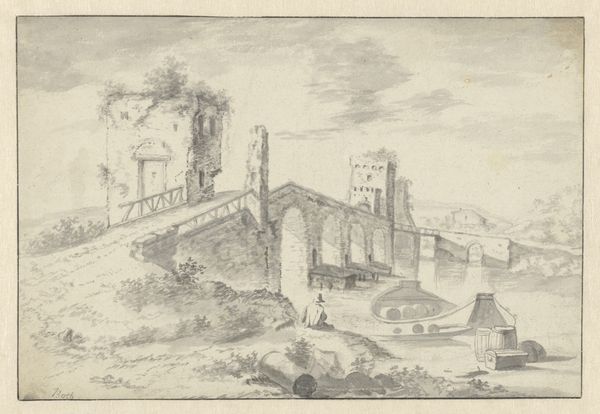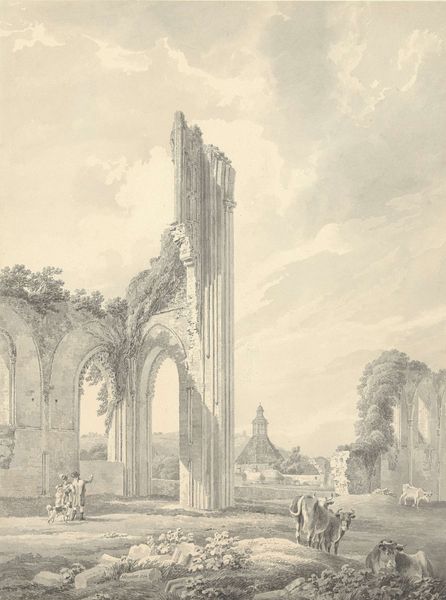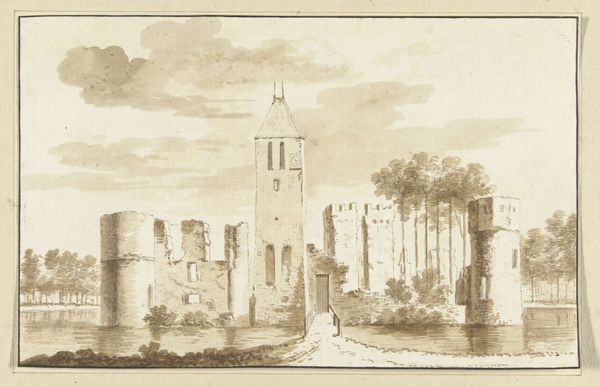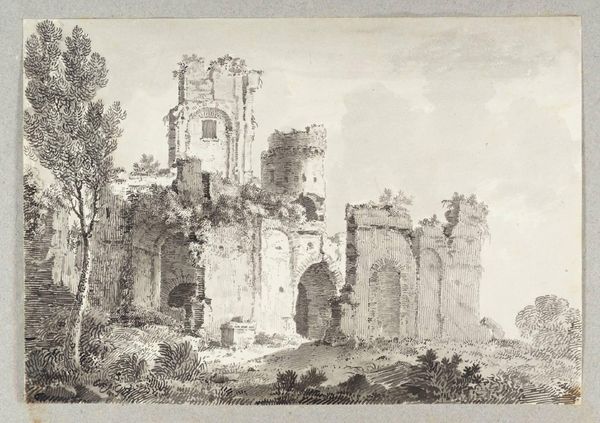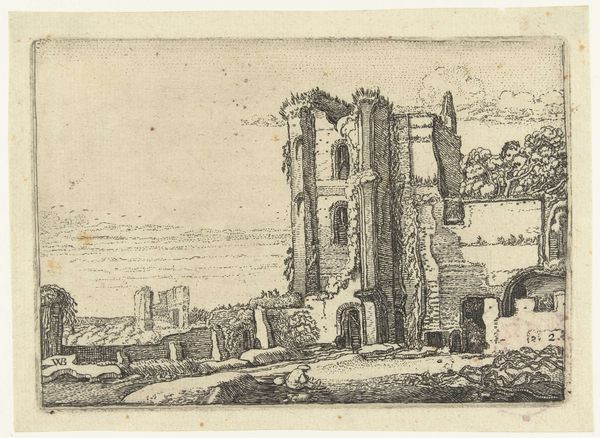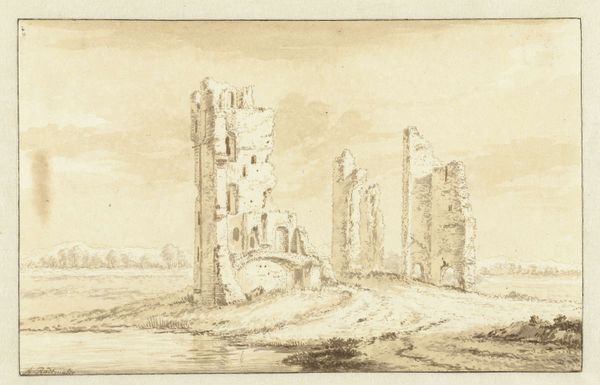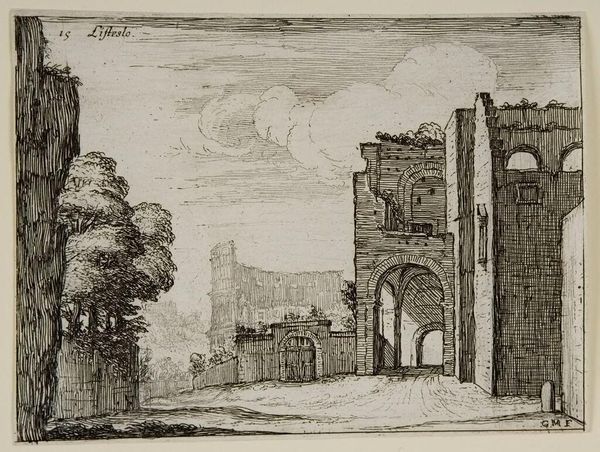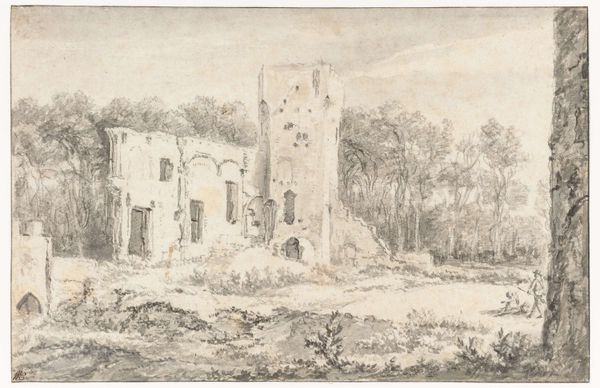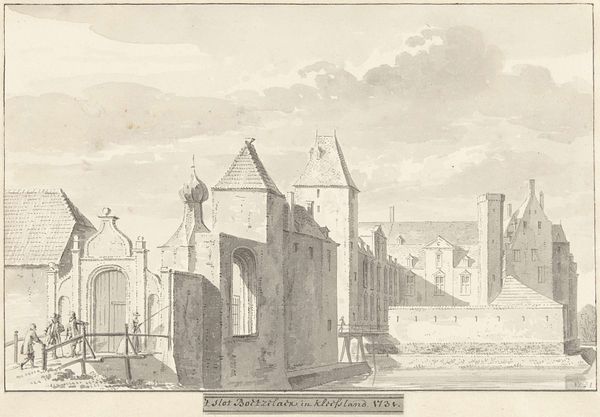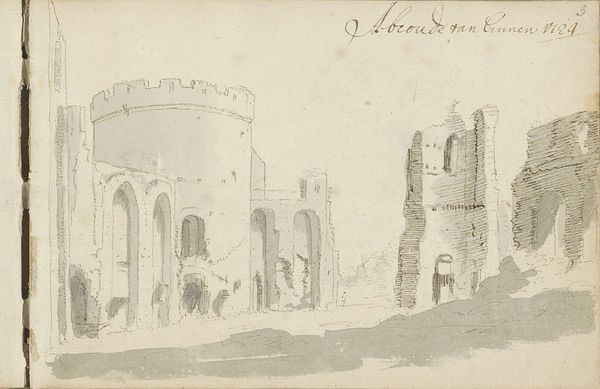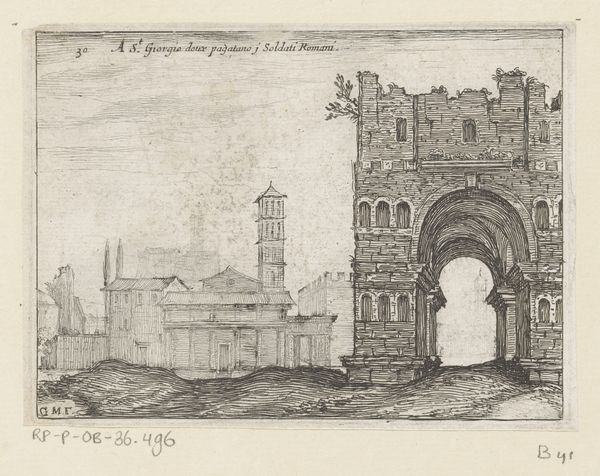
drawing, watercolor, pen
#
landscape illustration sketch
#
drawing
#
aged paper
#
toned paper
#
light pencil work
#
baroque
#
pencil sketch
#
sketch book
#
landscape
#
personal sketchbook
#
watercolor
#
pen-ink sketch
#
pen
#
cityscape
#
watercolour illustration
#
watercolor
Dimensions: height 150 mm, width 238 mm
Copyright: Rijks Museum: Open Domain
Curator: Welcome! Today, we're observing Abraham Rademaker's "Ruïne van het huis te Kleef bij Haarlem," a drawing dating from 1722-1733. It’s currently held at the Rijksmuseum. Editor: A rather melancholic scene. The monochrome palette and ruined architecture immediately suggest themes of decay and the passage of time, doesn't it? There's a palpable sense of loss permeating the image. Curator: Precisely. Rademaker's focus lies in meticulously rendering the structural elements. Note the play of light and shadow that defines the texture of the crumbling stone, as well as the composition with careful use of perspective, leading our eye to the depths of the ruin. Editor: And consider the historical context! Ruins during this period weren't merely remnants of the past, but powerful symbols within the shifting landscapes of colonialism and early capitalism. Was the Kleef house another victim of an expanding economic machine and imperial exploitation of natural resources and peoples? Curator: Rademaker may have seen these picturesque ruins primarily for their aesthetic potential, their compositional possibilities, the variations in texture they allowed him to express via watercolor, pen, and ink, using aged and toned papers, for example. Editor: But we can't separate art from the artist's, or our own, positioning within historical forces! I would suggest it is not simply aesthetic and speaks to the impermanence of human structures in the face of time and potentially even societal disruption. Think about what this decay represents: wealth, power, legacy turned to dust, or displaced. Who suffered when this house fell? And, who, today, profits from the artistic memorialization of its ruin? Curator: An intriguing, albeit speculative perspective! Regardless, this image stands as a testament to Rademaker’s technical skills and compositional arrangements. Editor: A potent visual reminder, urging us to confront the ruins around us—both visible and invisible. Thank you for your analysis!
Comments
No comments
Be the first to comment and join the conversation on the ultimate creative platform.


